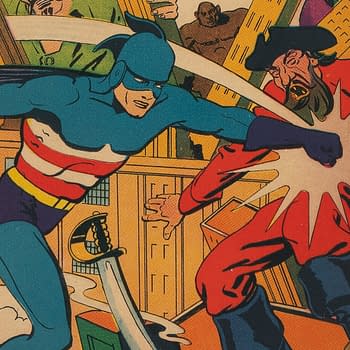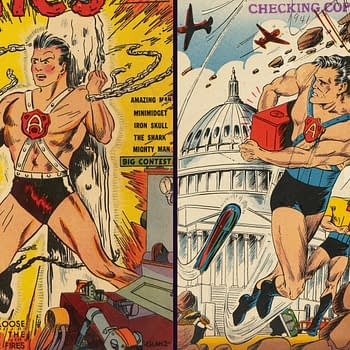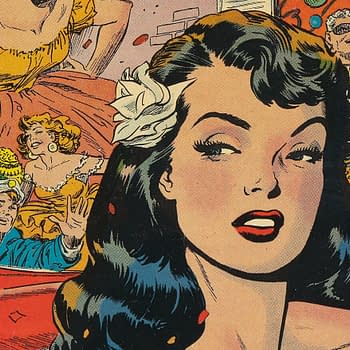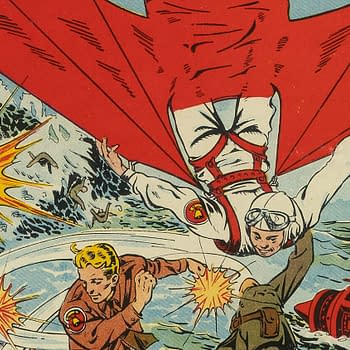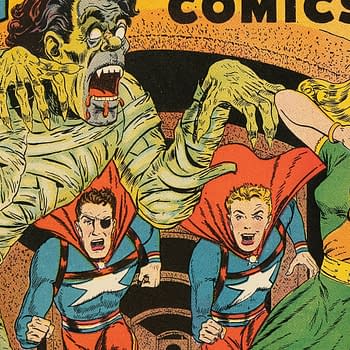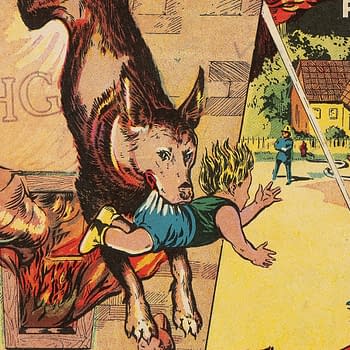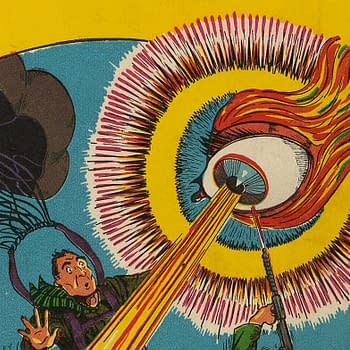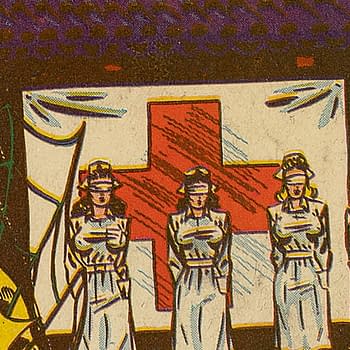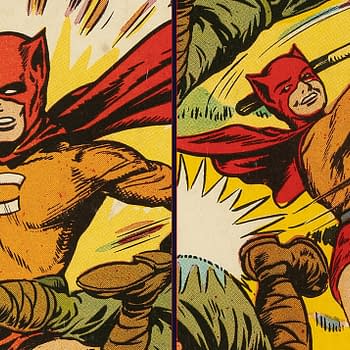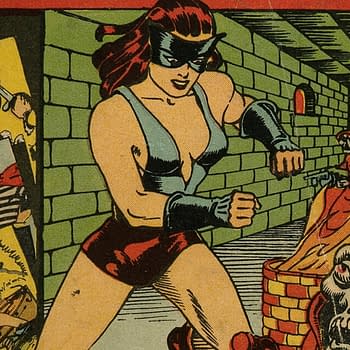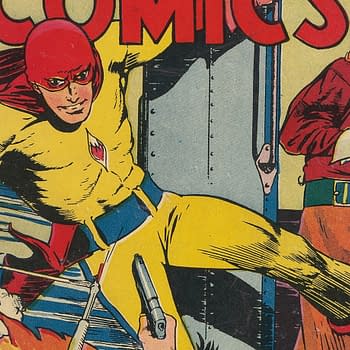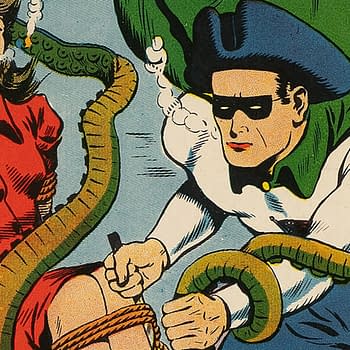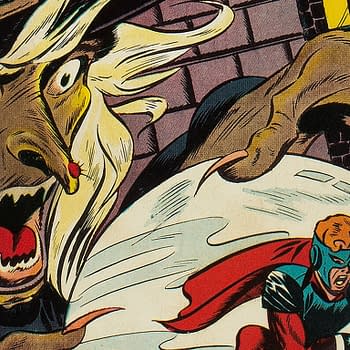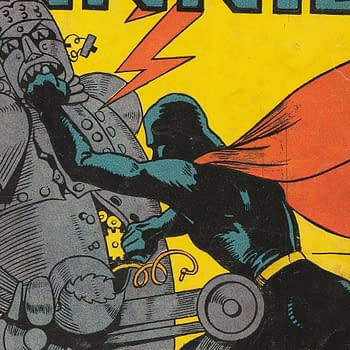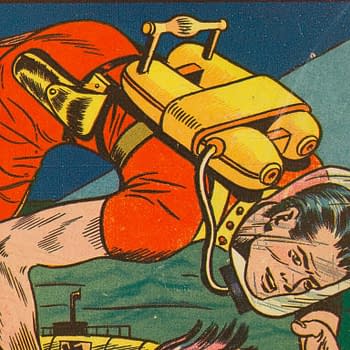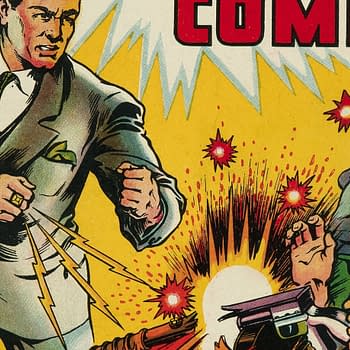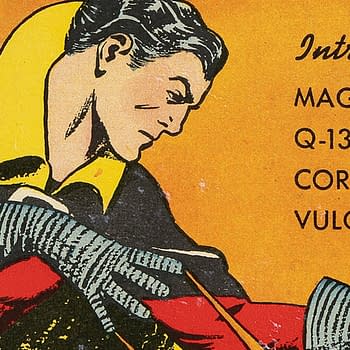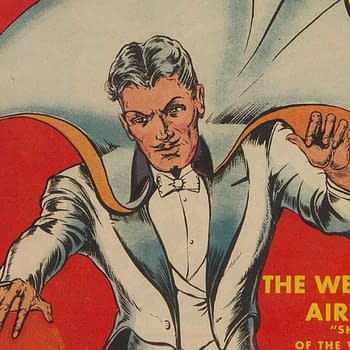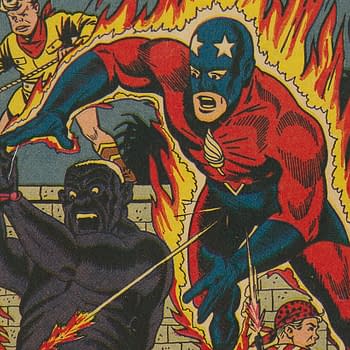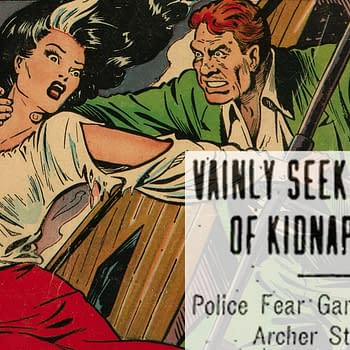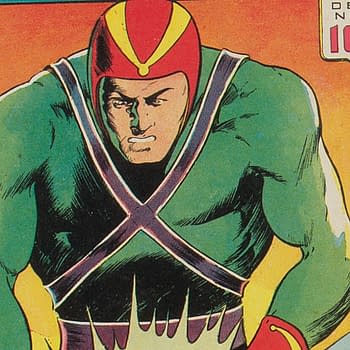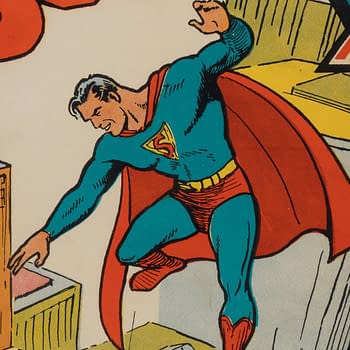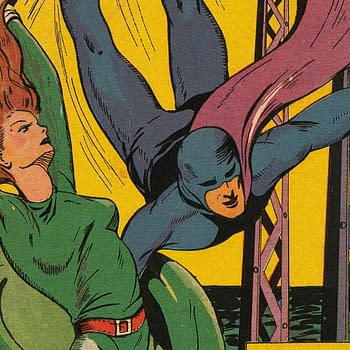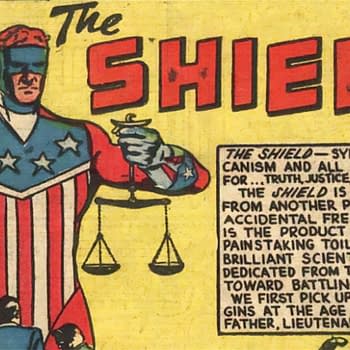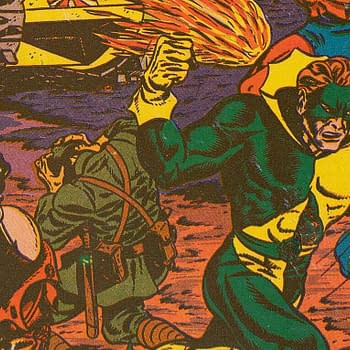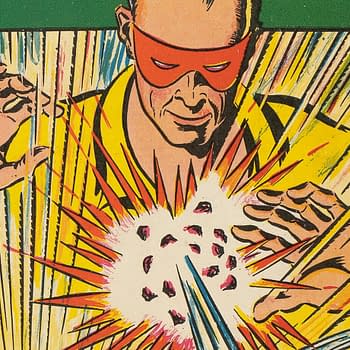"Accidentally endowed with the strength and buoyancy of an eagle", Exciting Comics #22 is the first appearance of the American Eagle by Kin Platt.
Vintage Paper Archives
Vintage Paper is about old comics and more: whether you're interested in the Platinum Age, the Golden Age, the Silver, Bronze, or Copper Ages -- or the history behind it all -- Bleeding Cool has you covered on that. Featuring articles and research from some of the best experts in the field for comics, pulps, dime novels, and much more.
A superhero created by Bill Everett and his mom Grace, Amazing Man starred in a series that has become a favorite of Golden Age collectors.
The second highest graded copy to hit the auction block in over a decade, Matt Baker's Cinderella Love #25 is one of the world's most sought after romance comics.
Created by the "powders of patriotism" at Boston Commons in 1941, The Sentinel debuted in Centaur's Liberty Scouts Comics #3.
Jack Binder evokes the Shudder Pulp era for the Captain Battle cover of Silver Streak Comics #15.
Blue Ribbon Comics is the debut comic book title from MLJ Magazines, and Rang-A-Tang the Wonder Dog was its first star.
Keen Detective #20 features an iconic Frank Thomas cover for his character The Eye, plus superscience from the Masked Marvel and Dean Denton.
MLJ mainstay Harry Shorten's Zip Comics #33 cover depicts the U.S. Army nurses who became known as the Angels of Battaan.
Charles Nicholas and future Marvel legend Sol Brodsky deliver a war-era saga directly inspired by the Operation Pastorius saboteurs earlier that year.
The Black Cat made her debut in Pocket Comics #1 by Alfred Harvey and Al Gabriel, and the featured covers by Joe Simon and Bob Powell.
With a Lou Fine cover and story featuring The Flame, Wonderworld Comics #6 also features a story inspired by the Rescue of the USS Squalus.
In Startling Comics #16, President Franklin D. Roosevelt's January 6, 1942 State of the Union sets the stage for cover mayhem and Fighting Yank drama.
Shield-Wizard Comics #11 is a stand-out horror cover of this unique MLJ Magazines series by underappreciated artist Clem Weisbecker.
Amazing Mystery Funnies V2 #11 features an underappreciated cover story inspired by a historic moment in science and pop-culture history.
America's Best Comics #18 has a stand-out Alex Schomburg cover, and a story about the foundational moment of the Atomic Age on the inside
Fox Feature's Samson was a superhero based on the biblical figure of the same name, and like his namesake, his hair was the key to his power.
All-New Comics #4 (Harvey, 1943) contains a science fiction story "Poison in the Universe" based on real WWII history.
In a Slam-Bang Comics origin that has elements similar to Captain Marvel, an aged magician gave a man power "beyond all ordinary mortals."
Magno the Magnetic Man was the underappreciated star of Ace Periodicals' long-running Super-Mystery Comics title.
In Top-Notch Comics #1, the Wizard foils a Japanese plan to attack Pearl Harbor -- two years before such an event occurred in real history.
Sort of a patriotic force of nature, Captain Courageous appeared when needed to defend Democracy in the rare Banner Comics series.
Alex Schomburg created covers for several flame-based characters, and his Red Blazer cover on All-New Comics #8 is highly sought after.
Was comic publisher Archer St. John's approach to Authentic Police Cases influenced by his 1925 abduction by notorious gangster Al Capone?
Created by Chesler art director Charles Sultan, Punch Comics #1's Sky Chief, was a reflection of the aviation history of the era.
The highest graded copy of Superman #1 CGC 9.0 has just sold for $9,120,000, the highest price ever paid for a comic book.
Found in a Northern California attic, the highest graded CGC 9.0 copy of Superman #1 should contend for the record of highest price ever paid for a comic book.
Many comics of this period were inspired by exhibits from the NY World's Fair, but Amazing Adventure Funnies #1 was inspired by the Fair's inner workings.
The investigation of a Congressional Committee goes horribly wrong in 1940's Shield-Wizard Comics #2 from MLJ by Irv Novick and Harry Shorten
Zip Comics #34 has stories that reflects three different theaters of operation of World War II, plus a backup story by 16 year old Joe Kubert.
Keen Detective Funnies V2#7 is the rare first appearance of Centaur's the Masked Marvel by Ben Thompson, in a saga inspired by Nikola Tesla.



